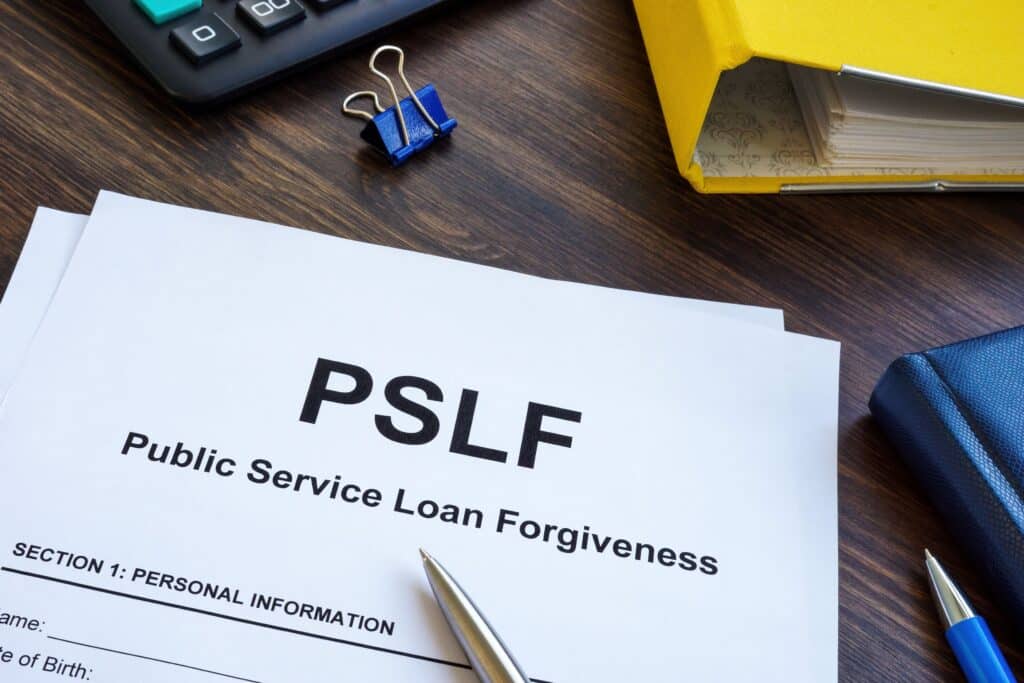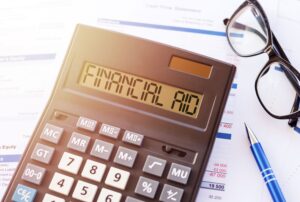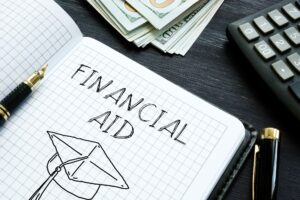Are you overwhelmed by your student loan payments? Are you hesitant to pursue a new job position or degree because you don’t know how to pay for continuing education? The Public Service Student Loan Forgiveness Program (PSLF) might be a good option for you as an educator.
The PSLF program forgives the remaining balance on direct loans for those who meet their requirements.
This may seem too good to be true, and for some, it is. While it’s not hard to apply for this program, only qualifying applicants will be eligible. Read on to find out whether your loans may be forgiven through this program.
General Eligibility
Do you qualify for Public Service Loan Forgiveness (PSLF)?
You may be eligible for Public Service Loan Forgiveness (PSFL) if you work for a government or not-for-profit organization. There is a list of eligible employers on the Federal Student Aid website, and you must be working full-time for one of them.
You can use this tool to search for your employer to determine if they meet the eligibility criteria. In general, any U.S.-based government agencies, including the military, will qualify, as will organizations considered not-for-profit and listed as 501C according to the IRS. Some other not-for-profit organizations that don’t qualify as 5013C will also meet the requirements; see the list here.
When you submit your form for PSLF, you must be working for an eligible employer. That means you should submit it every year or every time you change employers to avoid having to track down past employers many years after you stopped working for them. This will also force you to check each time to determine whether your employer is eligible for loan forgiveness.
What types of federal student loans are eligible for PSLF?
Any loan received under the William D. Ford Federal Direct Loan (Direct Loan) Program qualifies for PSLF.
Some examples are:
- Direct Subsidized Loans
- Direct Unsubsidized Loans
- Direct PLUS Loans
- Direct Consolidation Loans
In addition to working for an eligible employer, you’ll also need to have made 120 qualifying monthly payments through one of the following accepted repayment plans:
- Saving on a Valuable Education (SAVE) Plan—formerly the REPAYE Plan
- Pay As You Earn (PAYE) Repayment Plan
- Income-Based Repayment (IBR) Plan
- Income-Contingent Repayment (ICR) Plan
These are all income-driven repayment plans (IDR), meaning that they base your monthly payment cost on your income and your household size.
Keep in mind that not all borrowers will qualify for these IDR plans, and some might even increase your monthly repayment cost. Also, depending on how much you borrowed and your income, there’s a possibility that your loans could be paid off before you’ve reached 120 payments. It will take a minimum of 10 years to make this many payments.
The Federal Student Aid website offers this helpful loan simulator for those who want to explore their various repayment options.
Application Process
When should you apply for PSLF?
After you have determined that you are working for an eligible employer, you are free to submit your PSLF form. You will not immediately receive loan forgiveness, however. It would help if you were still forgiven, but you do not need to make these payments in order to fill out the form. As we stated above, the government recommends that you fill out the form yearly or every time you change employers so that you don’t have to submit forms for all your employers at once.
After you submit your form and the PSLF servicer confirms that you work for an eligible employer and that your loans qualify, your loans will transfer to the PSLF servicer, and you’ll receive a letter in the mail telling you how many qualifying payments you’ve made. This number will be updated every time you submit a new form, which is why it’s easier to submit the forms annually than wait until the last minute. The government will keep track of your payments as you submit each new form.
The servicer will forgive your remaining loan balance once you receive a letter stating that you’ve made 120 payments.
Step-By-Step Guide to Submitting the PSLF Application
There are two ways to submit the PSLF form:
- Manually, by downloading and printing a paper copy
- Digitally, using the PSLF help tool
Both the paper application and the tool should take approximately 30 minutes to complete. All you need to get started is a recent W2 from your employer(s) or their Federal Employer Identification Number (EIN)
Regardless of which option you choose, after you fill out the form, you’ll need to send it to your employer(s) for their signature(s) to verify your employment. Then you’ll need to either electronically submit the form, or send the paper application to MOHELA, ED’s federal loan servicer for the PSLF Program.
Maximizing Benefits
How could the recent PSLF program improvements benefit you?
The PSLF Waiver opportunity previously stated, “allowed borrowers to receive credit for past periods of repayment that would otherwise not qualify for PSLF. This opportunity was announced on Oct. 6, 2021, and ended on Oct. 31, 2022. Beginning Nov. 1, 2022, the normal program requirements for PSLF and TEPSLF resumed.”
Although the waiver has ended, many of its benefits have been continued through the IDR Account Adjustment, which the Biden Administration announced in 2023. The Account Adjustment expands the loan parameters much like the waiver opportunity did, so that “prior periods of repayment, as well as certain past periods of deferment and forbearance, can count, as can periods before loan consolidation.” This means that more people will be eligible for PSLF, so these benefits are expected to benefit millions of borrowers.
If you are currently repaying student loans or considering taking them out, I highly recommend looking into the PSLF program to see if you qualify for loan forgiveness. Don’t let student loan debt keep you from pursuing a career you’re passionate about!
Educators never stop learning; check out our available graduate degree programs to hone your skills and promote lifelong learning and academic excellence.




